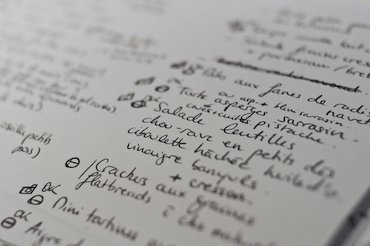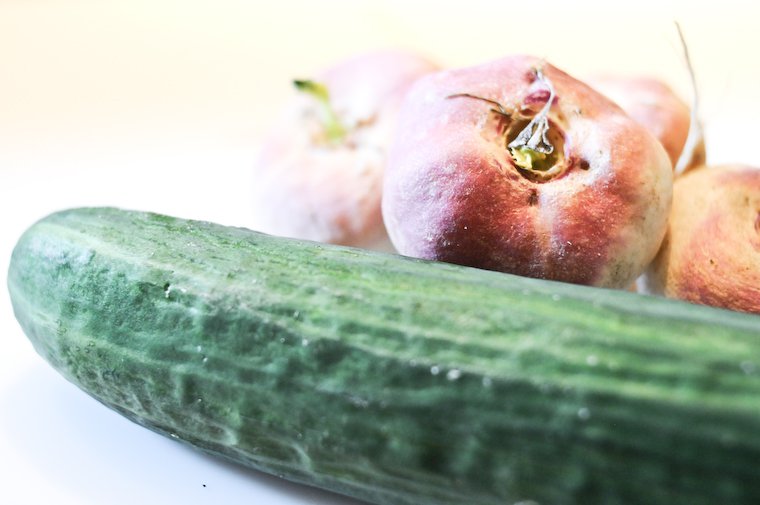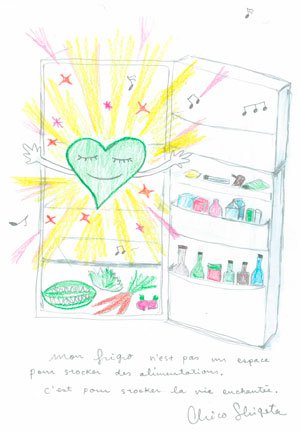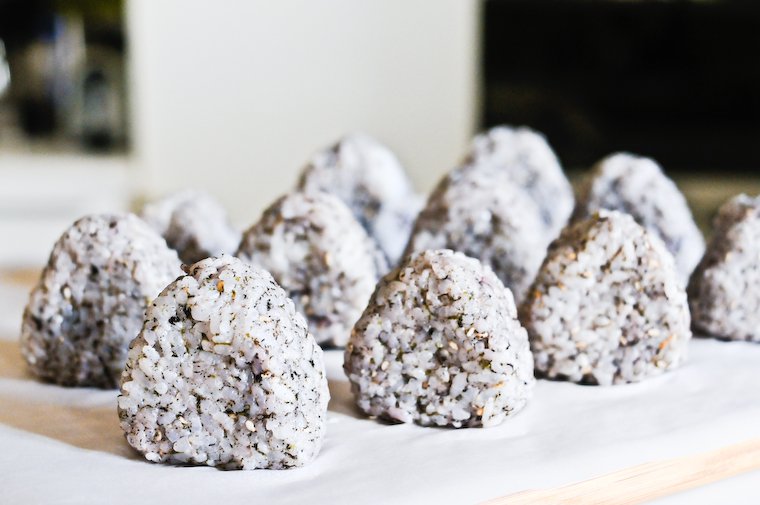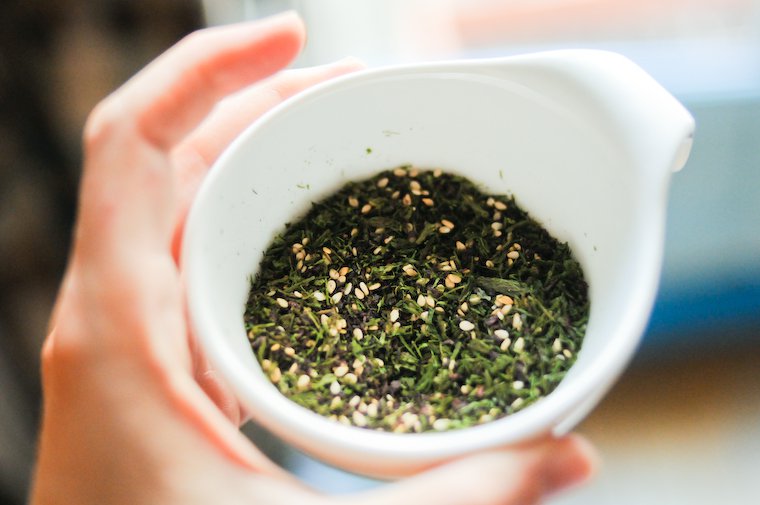In the midst of the August heatwave, Maxence and I sat at a dappled table of a restaurant in Urdax, a pretty village in the Spanish Basque country, and ordered gazpacho.
It was brought to us in white ceramic bowls, with a side plate of toppings to sprinkle in — cucumbers, green bell peppers, and onions, all of them finely diced, flakes of serano ham, and tiny croutons — and we slurped it all down thirstily.
The nostalgic remembrance of this beautifully quenching tomato soup inspired me to make an easy gazpacho at home with one of the last batches of sun-kissed, ripe-to-bursting, fleshy tomatoes I got this summer.
Usually, when I lay my hands on excellent tomatoes, which is hard enough to do in Paris without taking out a mortgage, I tend to eat them simply, à la croque-au-sel (sliced and sprinkled with salt) or in very elemental tomato salads, dressed with a good olive oil, a touch of balsamic vinegar (I like the one from Beaumes-de-Venise I get from Première Pression Provence), a scatter of fresh herbs, and possibly a spoonful of black tapenade stirred in.
But the nostalgic remembrance of this beautifully quenching tomato soup inspired me to make it at home with one of the last batches of sun-kissed, ripe-to-bursting, fleshy tomatoes I got this summer.
To make this easy gazpacho I worked with the ingredients I had on hand, and therefore skipped the cucumber, which is often added, but wasn’t missed. And for practicality‘s sake, I opted to not peel the tomatoes, and to process the soup finely enough that it wouldn’t need sieving. (I also thinned it a little further after taking the above picture.)
It was astonishingly good, fruity and tangy and savory, all qualities a good gazpacho should display, and so gratifying I vowed to make it more often in the future. And after consulting my crystal ball, I saved a few servings in the freezer, in preparation for the gray months ahead.
A final note: some people say a chilled tomato soup that’s thickened with bread loses gazpacho naming rights and becomes a salmorejo; I’ll let you decide what you want to call it. And for a detailed discussion on the gazpacho-making technique, I’ll refer you to Felicity Cloake’s take on How to make perfect gazpacho.
Join the conversation!
What’s your favorite use for those late-season tomatoes? A panzanella, slow-roasted tomatoes, a tomato and einkorn wheat salad, or something else altogether?



